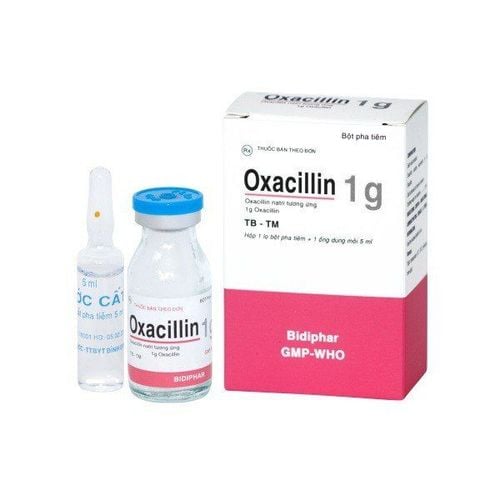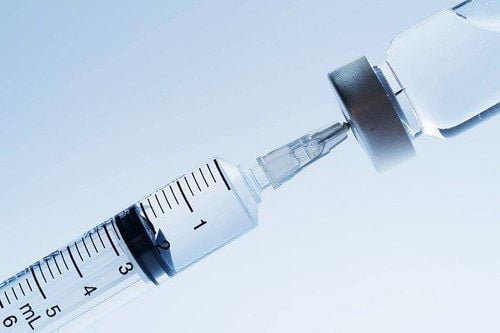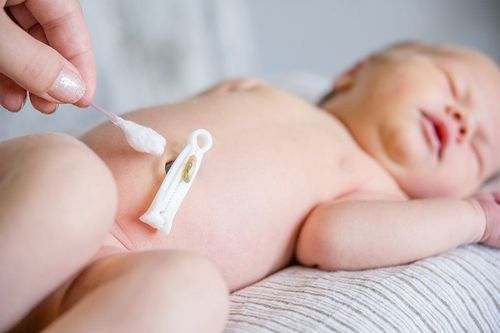This is an automatically translated article.
The article was professionally consulted by resident Doctor Duong Van Sy - Resident Doctor of Pediatrics - Department of Pediatrics - Neonatology - Vinmec Hai Phong International General Hospital.After birth, the umbilical cord will no longer be needed and should be cut and then clamped. When it dries, the umbilical cord will fall off on its own and fall off the newborn during the first few weeks of life. However, during this time, if care is not taken, this can be a favorable environment for infection.
1. What is an infant umbilical cord infection?
The umbilical cord is a flexible, flexible cord consisting of one vein and two arteries. The function of the umbilical cord during pregnancy is to carry nutrients and oxygen-rich blood from the mother to the fetus. After labor, the newborn will be born as a separate living organism, the umbilical cord function will be terminated. The midwife will clamp the umbilical cord at both ends to stop the bleeding and cut close to the umbilical cord, leaving only the stalk on the skin of the newborn's abdomen. After that, the remaining umbilical cord will dry out and usually fall off on its own in one to three weeks after birth.
During delivery, cord clamps cut the cord as well as in the days of caring for the baby until before the cord falls off, germs can invade this organ and cause infection. Even potential bacterial pathogens will have the opportunity to proliferate and cause disease, colonizing the umbilical cord stump after birth if hygienic conditions are no longer as guaranteed as the fetal environment. Not only that, if the child has congenital cardiopulmonary diseases, the ability to supply blood and oxygen is poor, it is easy to cause tissues in the periphery to undergo anaerobic metabolism, and for a long time, it will be necrotic and create favorable conditions for the growth and development of children. development of anaerobic organisms.
Thus, the neonatal umbilical cord infection that occurs in the umbilical cord of the newborn before the umbilical cord is shed is called neonatal umbilical cord infection. This infection begins in the neonatal period with only superficial cellulitis but can progress to necrotizing fasciitis, myositis, or to systemic disease. Accordingly, from the umbilical cord, germs can enter the bloodstream directly and as a result even a mild infection can become serious quickly. When an infection enters the bloodstream and spreads (called sepsis ), the condition can cause damage, multi-organ failure, and even be life-threatening.
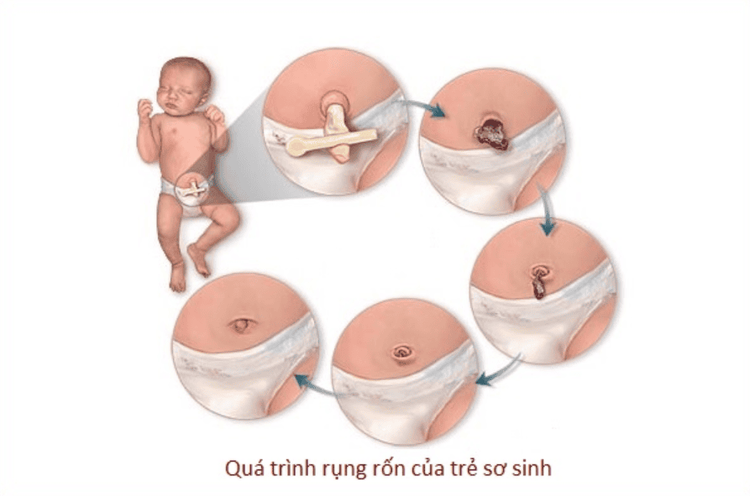
2. What are the signs of an umbilical cord infection in a newborn?
After birth, the baby's umbilical cord will be clamped and dry, so it is normal to form small scabs. Occasionally, the umbilical cord can also bleed a bit, especially around the base of the umbilicus when it's ready to fall off. At this time, parents need to be gentle in taking care of the baby's navel so that the wound heals quickly.Thus, if the umbilical cord proceeds as above, even if there is bleeding, there is nothing to worry about. Conversely, when parents see other unusual signs, infection should be suspected. Symptoms of neonatal umbilical cord infection include:
Abdominal skin around the umbilical cord is red, swollen, and hot to the touch. The umbilical cord is tender when pressed. There is pus coming out of the skin around the umbilical cord. The umbilical cord has a foul odor. Fever The child is fussy, constant discomfort Skipping or sucking less Drowsy or lethargic. At this point, take your baby to the pediatrician immediately if you notice any of the above signs of an umbilical cord infection. Neonatal umbilical cord infections can be fatal in up to 15% of all infants. Therefore, when a newborn has an infection of the umbilical cord, it is considered a medical emergency.
In addition, premature babies will have a high risk of contracting as well as having severe complications from umbilical cord infections due to their inherently weaker immune systems. Some reports suggest that the mean age of onset of neonatal umbilical cord infection is 5 days of age in term infants but only 3 days of age in premature infants. At the same time, infants will be more susceptible to umbilical cord infections when there are risk factors such as low birth weight, umbilical catheterization,...
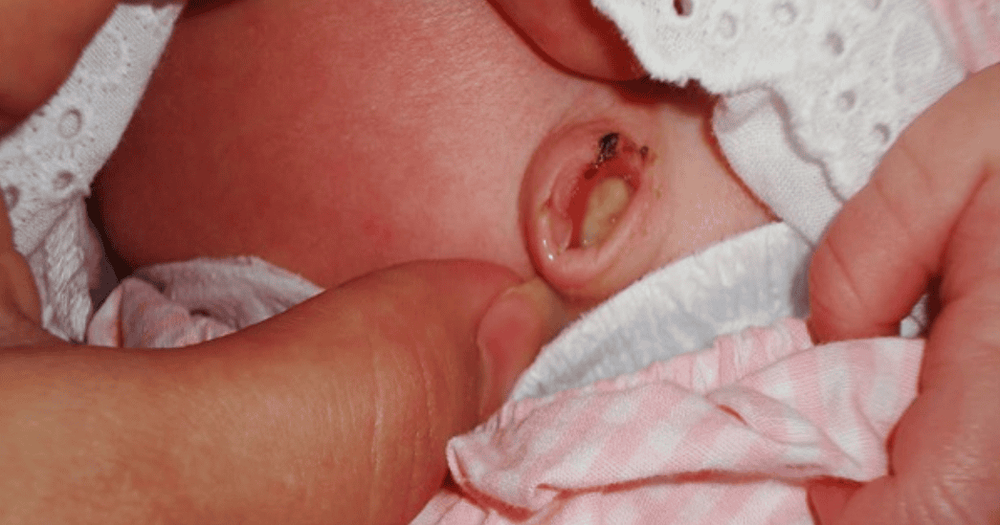
Dấu hiệu nhiễm trùng rốn ở trẻ sơ sinh
3. What is the treatment for a newborn umbilical cord infection?
To treat neonatal umbilical cord infections, the pediatrician will prescribe antibiotics according to the degree of infection as well as other health characteristics of the child. At the same time, parents also need to be guided on how to take care of the navel at home.
To determine the most appropriate treatment for an infant umbilical cord infection, the doctor will usually take a swab soaked in secretions from the infected area. The swab will then be tested in a laboratory, determining the presence of bacteria as well as identifying the exact pathogen causing the infection. When doctors know which germ is the main agent, choosing the right antibiotic to fight it will be most accurate.
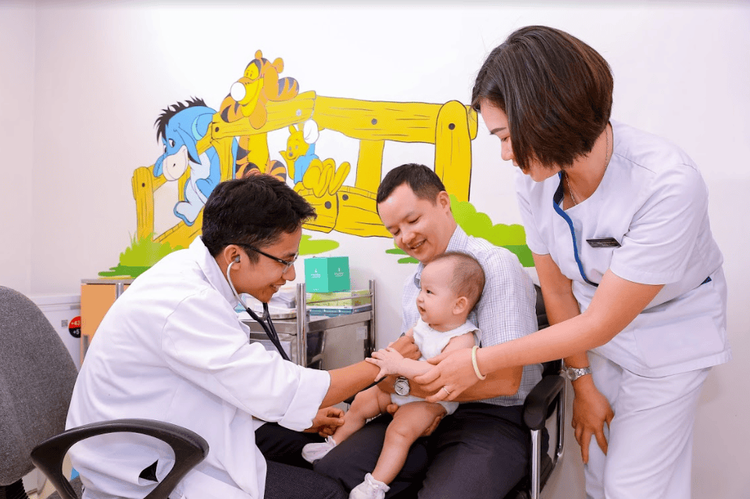
Cha mẹ nên đưa trẻ đến gặp bác sĩ để được thăm khám và hướng dẫn chăm sóc rốn bé
However, in practice, children are often given antibiotics from the start according to the common antibacterial spectrum and treatment will largely depend on the extent of the infection.
For mild infections, your doctor may recommend applying antibiotic ointment to your baby several times a day on the skin around the umbilical cord. If this area only secretes a small amount of pus and gradually decreases, then the infection has improved. However, an initial small infant umbilical cord infection can still become more serious when left untreated. Therefore, it is important to see a doctor whenever an umbilical cord infection is suspected.
For more serious infections, the baby will likely need to be hospitalized and given intravenous antibiotics. The duration of intravenous antibiotics usually lasts about 10 days. Then, if the infection responds, the child will be discharged and given more oral antibiotics at home.
In some cases, neonatal umbilical cord infection may require surgical drainage combined with systemic antibiotic infusion. That's when the infection has spread, a lot of tissue has died, and surgery to remove dead cells can ensure control of the bacteria.
4. How to take care of a baby with an umbilical cord infection at home?
It is the right umbilical cord care that will help reduce the risk of neonatal umbilical cord infection in particular and infection in other organ systems in general in the first days of life. Accordingly, parents taking care of infants with umbilical cord infection need to understand the following actions:
Wash hands thoroughly with soap under clean running water at the time before and after caring for the umbilical cord for the infant. born. Clean the area around the umbilical cord using a clean cloth, gauze soaked in diluted alcohol. Absorb all secretions, pus as well as urine of the child if there is a wire attached. Apply antibiotic ointment as prescribed by your doctor. Let the area dry naturally and quickly bandage the umbilicus. In addition, parents also need to pay attention to other hygiene issues in the days when the umbilical cord has not fallen off and the umbilical stump has not completely healed, both to help avoid infection of the newborn umbilical cord or if there is an infection, it will quickly improve:
Do not wear diapers for babies beyond the navel. This helps prevent contamination from the baby's urine and feces onto the umbilical cord area. If necessary, cut a gap in the front of the diaper to create a clean gap for the umbilical cord. Do not let your baby wear tight clothing. Do not bathe your baby in water below the umbilical cord until the umbilical cord has fallen off and the umbilical stump has completely healed. Instead, bathe your baby with a sponge or wet washcloth. Do not arbitrarily use desiccant powder or other powders, cosmetics on the umbilical cord and the skin around the umbilicus. Do not try to make the umbilical cord fall off. When completely dry, the umbilical cord will fall off on its own.
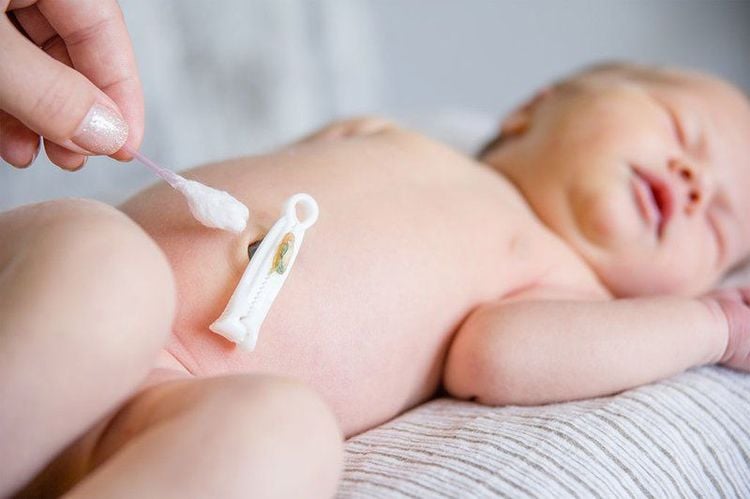
Rốn trẻ cần được chăm sóc đúng cách
5. How long does it take for a baby to recover from an umbilical cord infection?
When severe neonatal umbilical cord infection is detected early and treated aggressively, most infants recover completely within a few weeks.
If the baby needs surgery to clear the infection, the wound will not be closed at first, but the opening will remain open, covered with a bandage to allow the pus to continue to drain. Only when pus is no longer secreted, indicating that the infection is okay, the wound will be stitched closed and will quickly heal from the bottom up.
In summary, umbilical cord infection is rare in healthy, full-term neonates born in hospital with good medical conditions. However, when neonatal umbilical cord infection occurs, it is a serious condition that can become life-threatening if not detected and treated early. Therefore, parents need to take their children to the doctor when they suspect an umbilical cord infection so that the child can quickly intervene and increase the chance of a full recovery for the child.
Pediatrics department at Vinmec International General Hospital is the address for receiving and examining diseases that infants and young children are susceptible to: viral fever, bacterial fever, otitis media, pneumonia in children, ... With modern equipment, sterile space, minimizing the impact as well as the risk of disease spread. Along with that is the dedication from the doctors with professional experience with pediatric patients, making the examination no longer a concern of the parents.
To register for examination and treatment at Vinmec Health System, customers can go directly to facilities nationwide, or register online HERE.
SEE MORE
Identify and treat umbilical cord infections in infants Abnormalities in newborns after umbilical cord shedding How soon after birth will babies shed umbilical cords?





